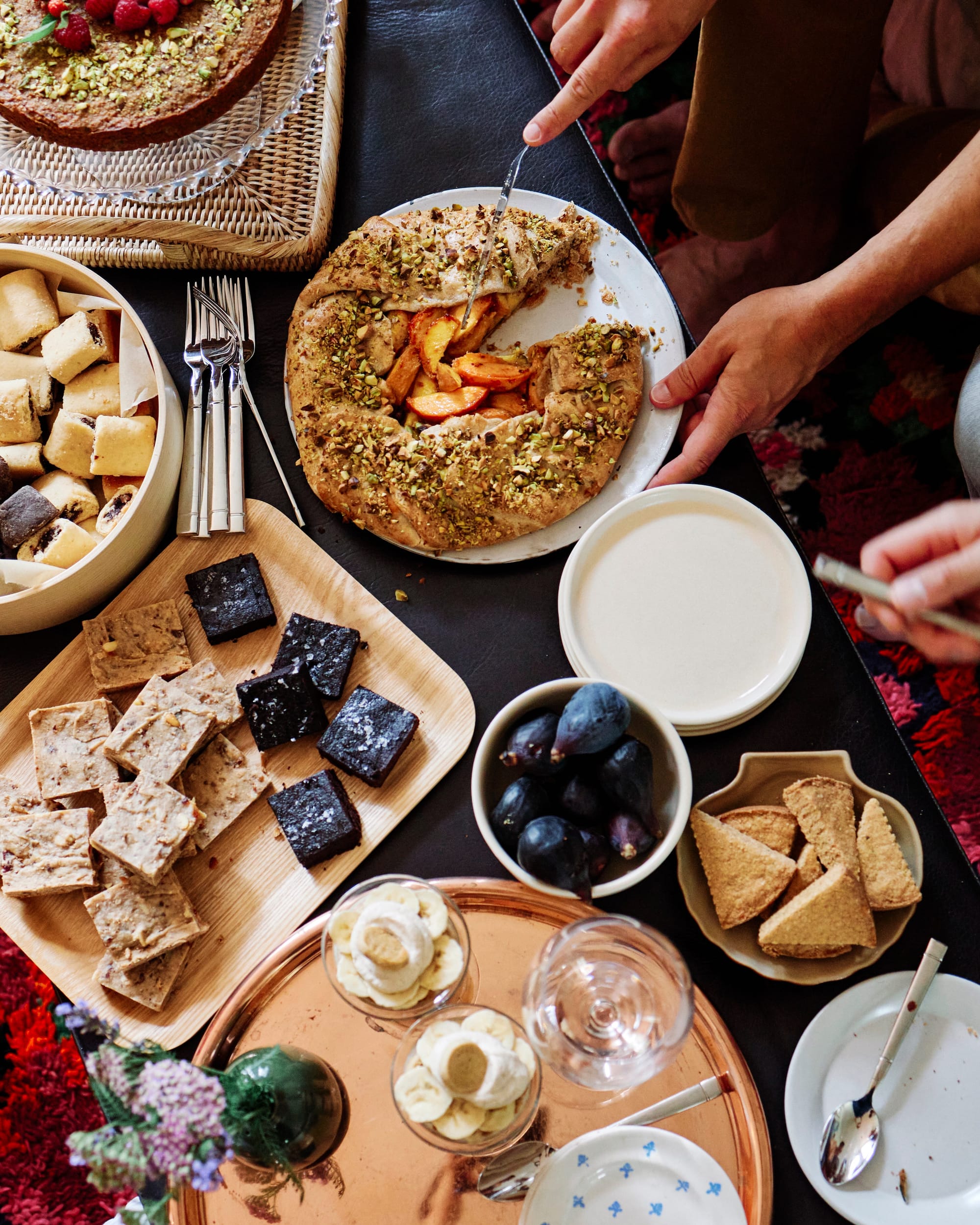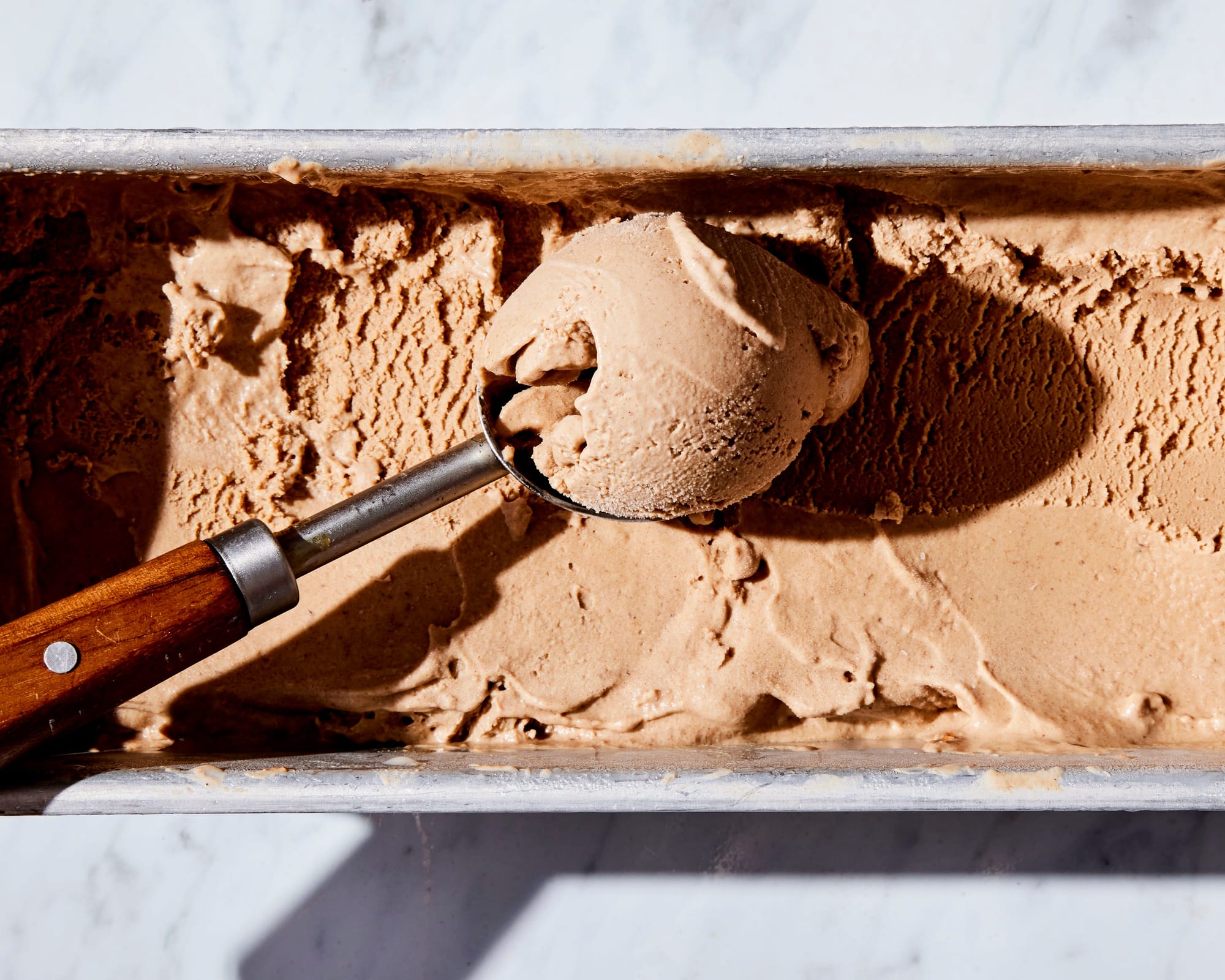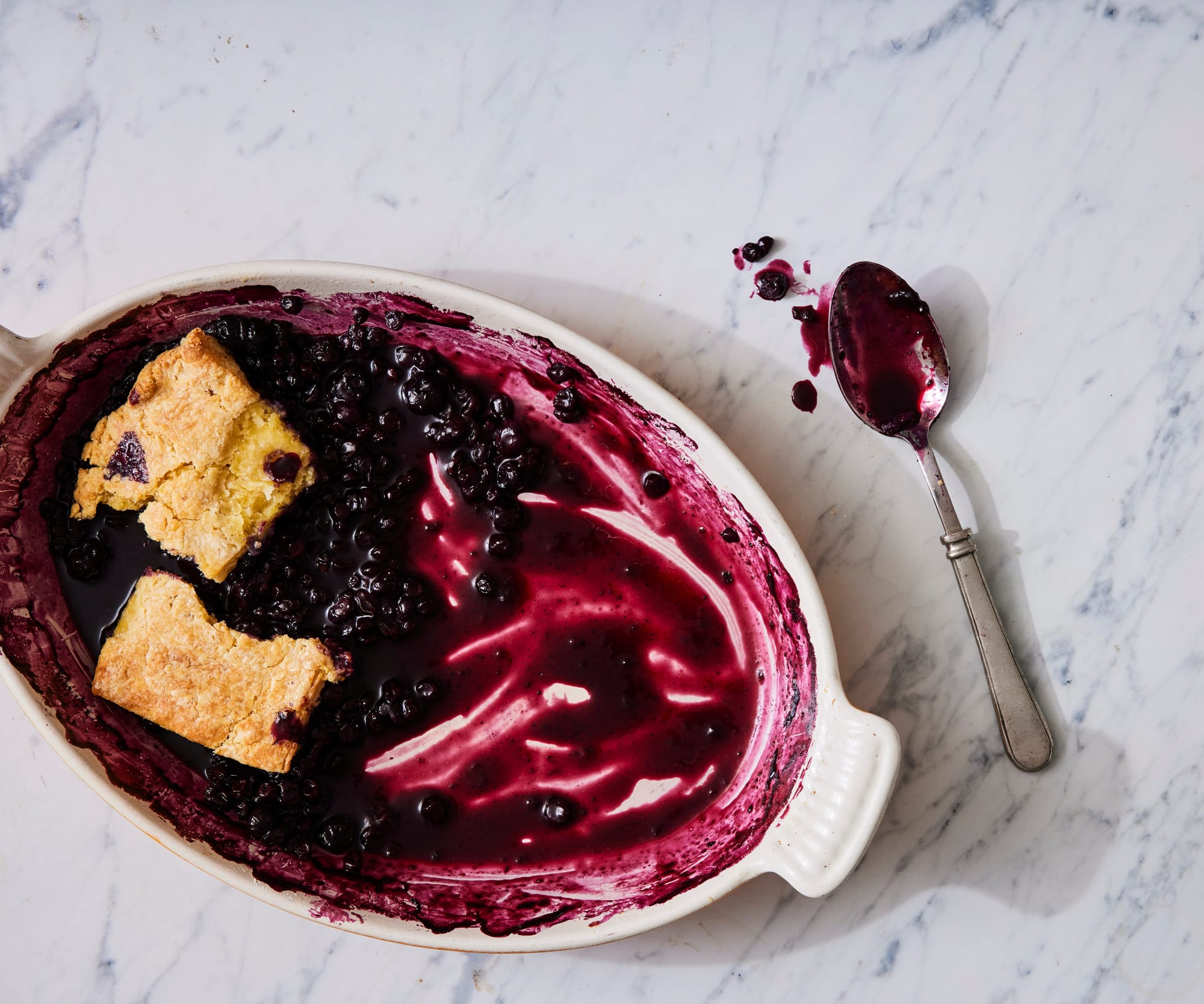Book Excerpt: Good & Sweet
by Brian Levy

Table of Contents
This week we have an excerpt and two recipes from Brian Levy’s new book Good & Sweet: A New Way to Bake with Naturally Sweet Ingredients, out 7/26 from Avery. I met Brian through my good friend Catrine Kelty, who styled all the food for the book. (As you’ll note from the images, Catrine is among the best in the biz, and I someday hope to be cool enough to have a book she can style for me.) When Brian told me about the subject of his book, I knew I’d want to share some of it with you here.
Good & Sweet is an ingenious and painstakingly-researched collection of dessert and sweets recipes made sweet entirely with fruit—dried, fresh, and/or juiced—and other natural, unexpectedly sweet ingredients—nuts, grains, dairy, and fermented products, instead of cane sugar, liquid sweeteners like honey or maple syrup, or commercial “alternative” sweeteners. The book also contains numerous gluten-free and vegan recipes, including the Vegan Butter we have to share with you today.
I’ve not tasted any of Brian’s creations—yet, that is; making many of them is high on my summer vacation to-do list—but, having read the book, I have no doubt they are as delicious as they are beautiful. And I’m excited to incorporate some of Brian’s creative approaches to sweetening baked goods to my breads.
—Andrew
Good & Sweet, by Brian Levy (excerpted from the Introduction)

Several years ago, as I savored a lavishly sweet and flavorful mango, a question struck me: Can’t I make a sweet dessert out of this? The fruit was as sweet as I’d want any dessert to be, so why did I (and millions of other people) rely on mounds of sugar to produce sweet dishes? We take for granted that sugar—in the form of cane sugar, maple syrup, honey, etc.—is going to go into our desserts or our sweet breakfast dishes. But why not look elsewhere, mine the wide world of sweet, ripe fruits? I had to start experimenting, and it started with a mango custard, for which I harnessed the natural, flavorful sweetness of the fruit.
When that attempt worked, I wanted to make more desserts like this and I searched high and low, mostly in vain, for existing recipes. Why didn’t these recipes exist? I wondered. The answer to that Why? would gradually make itself known in the form of a pile of failed experiments: Because it is not easy.

Working without sugar in a frenzy of experiments reminded me of all the functions cane sugar normally serves: In addition to sweetening, it enhances subtle flavors, it provides structure, it keeps things moist, it keeps things fresh. It adds texture (crunchiness, chewiness), color, and flavor when caramelized. There was no single understudy that could swoop in to cover all of these roles. A lot of auditioning was going to be required. I had to focus on the breakthroughs: There were things I couldn’t do for want of sugar (meringue!), but it was amazing how many things I could make without it. Indeed, because it was such a challenge to replace such a versatile ingredient, the moments of success were that much . . . sweeter.
When I successfully made a sticky toffee pudding (one of my all-time favorite desserts) whose richly sweet, caramel flavors had been achieved with only dates, brown butter, miso paste, and organic milk powder, I knew I was on to something.

In Good & Sweet, I tell you the story of how, through years of research and experimentation, I came to use the natural sweetness of fruits, grains, and other whole food ingredients to convert my favorite sweet treats into nutritious foods that contain no added sugars or artificial sweeteners. I imagined a world without sugar—that is, without cane sugar, maple syrup, honey, agave nectar, or other near-pure sugars—and pondered how to fill that world with delicious, satisfying, and yes, sweet, desserts, breakfasts, and snacks. The answers lay mostly in fruit, along with other natural ingredients whose sweetness is often overlooked. The result is a collection of original recipes and a guide to my secret ingredients and techniques. This is not a “sugar-free” cookbook; the recipes in Good & Sweet are not about what they lack but rather about what they gain from their integral inclusion of fruit and other flavorful, enriching ingredients. By excluding a staple baking ingredient and reworking recipes, so much is gained: flavor, nutritional value, and a nudge toward mindfulness about ingredients.

The ingredients that I use in these recipes to eliminate the need for added sugars are not found in the sweetener section, because they are not one-trick ponies. Grease up your grocery cart wheels, because you’ll be heading toward the produce, the dried fruits, nuts, flours, and grains. You might need a few items from the freezer, the dairy fridge—and oh, back to the baking aisle, because you’ll need some spices. In short, you are amassing a collection of ingredients that will impart not only their inherent sweetness but also their unique flavors to the decadent treats we are about to make.
About The Recipes:
The strudel from the Poppy Seed Jam Strudel might not be what you're expecting when you read "strudel"; it doesn't have a thin, sharding shell of dough, but rather a sturdy spiral of toothsome enriched dough with a firm but giving crust—not unlike the shell of a Fig Newton, but way better. The dough is called Beugelteig, or Viennese sweet yeast-risen dough, and is adapted from the recipe in Nick Malgieri's PASTRY.
The filling and assembly are inspired by the poppy seed strudel at a Parisian Jewish bakery and by a bit of research into Hungarian poppy seed rolls.
As for the Vegan Butter, it's one of the few alternative elements I devised alongside the main recipes in Good & Sweet. I tinkered and tweaked over the course of years and landed on formulas with which I'm really happy for dairy alternatives (butter, milk, cream cheese, creme fraiche, and milk powder) and gluten-free flour blends (all-purpose, bread, whole "wheat"). My goal was for these ingredients to work really well as components in recipes where dairy or gluten are called for. They work as substitutes, but they also have their own unique characteristic flavors that I really enjoy.
Brian Levy is a pastry cook who previously worked at Michelin-starred Babbo, where he was mentored by James Beard Award-winning pastry chef Gina DePalma. He left to work the fields and kitchens of farms and inns in Europe and Martha’s Vineyard, and then as a private chef. Outside of the kitchen, he also studied architecture at Yale.
Excerpted from Good & Sweet. Used with the permission of the publisher, Avery. Copyright © 2022 by Brian Levy. Photos by Kristin Teig.
wordloaf Newsletter
Join the newsletter to receive the latest updates in your inbox.





